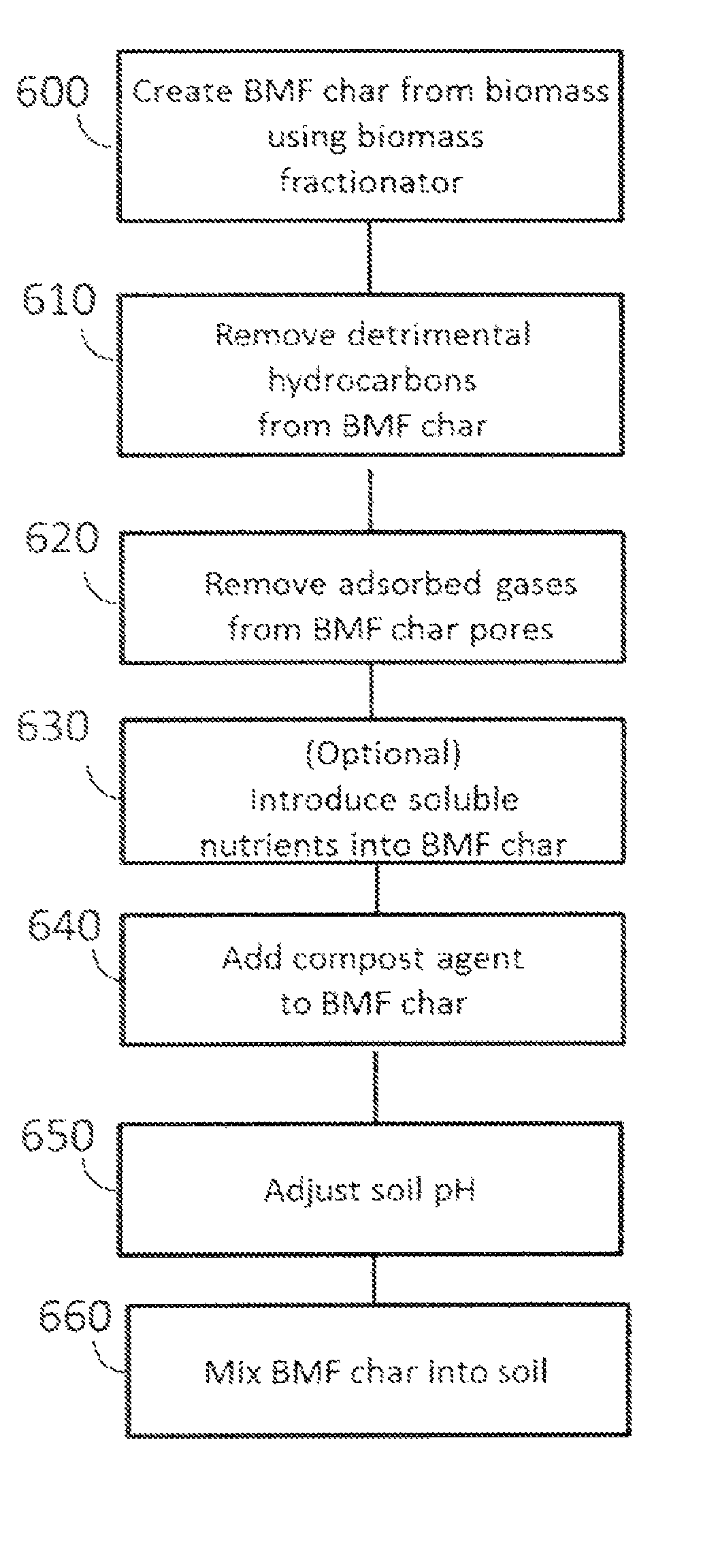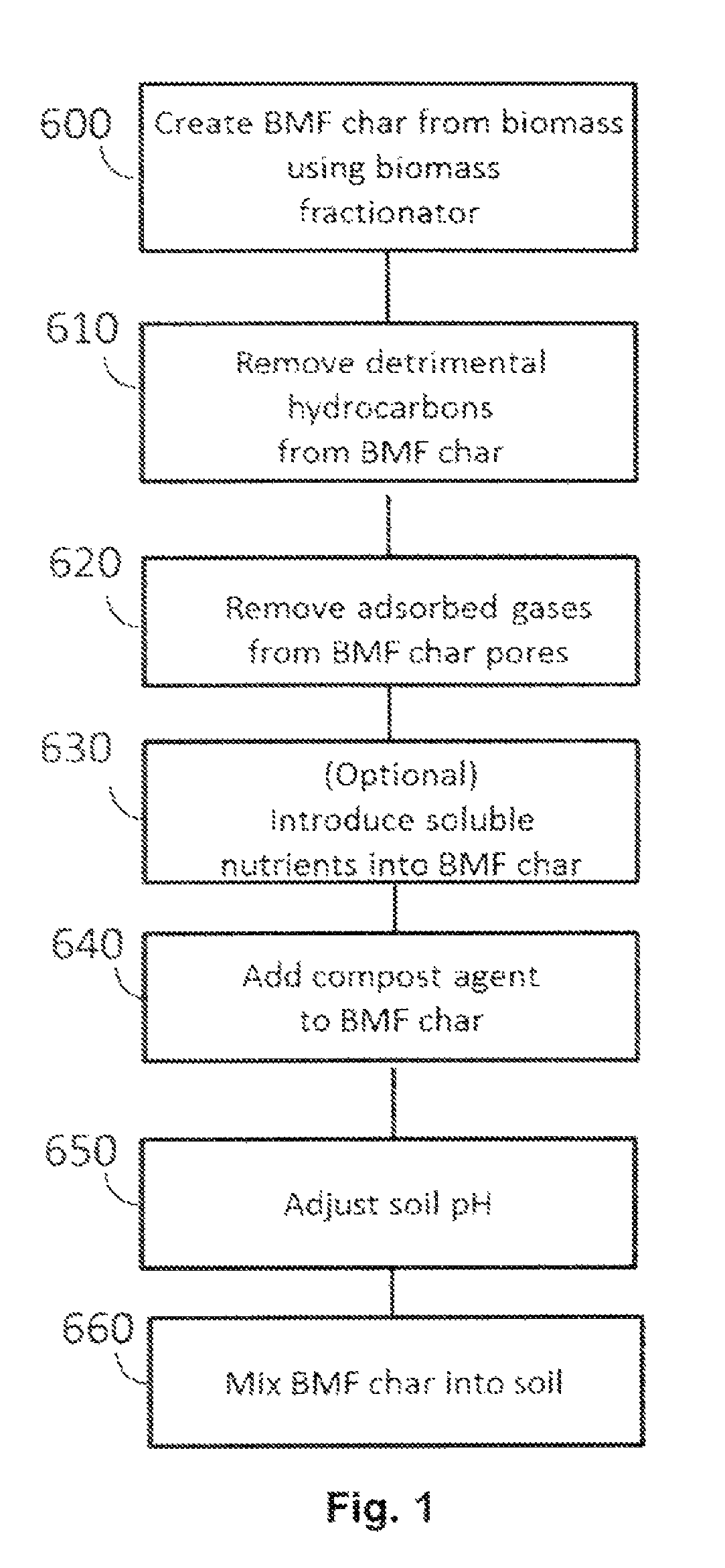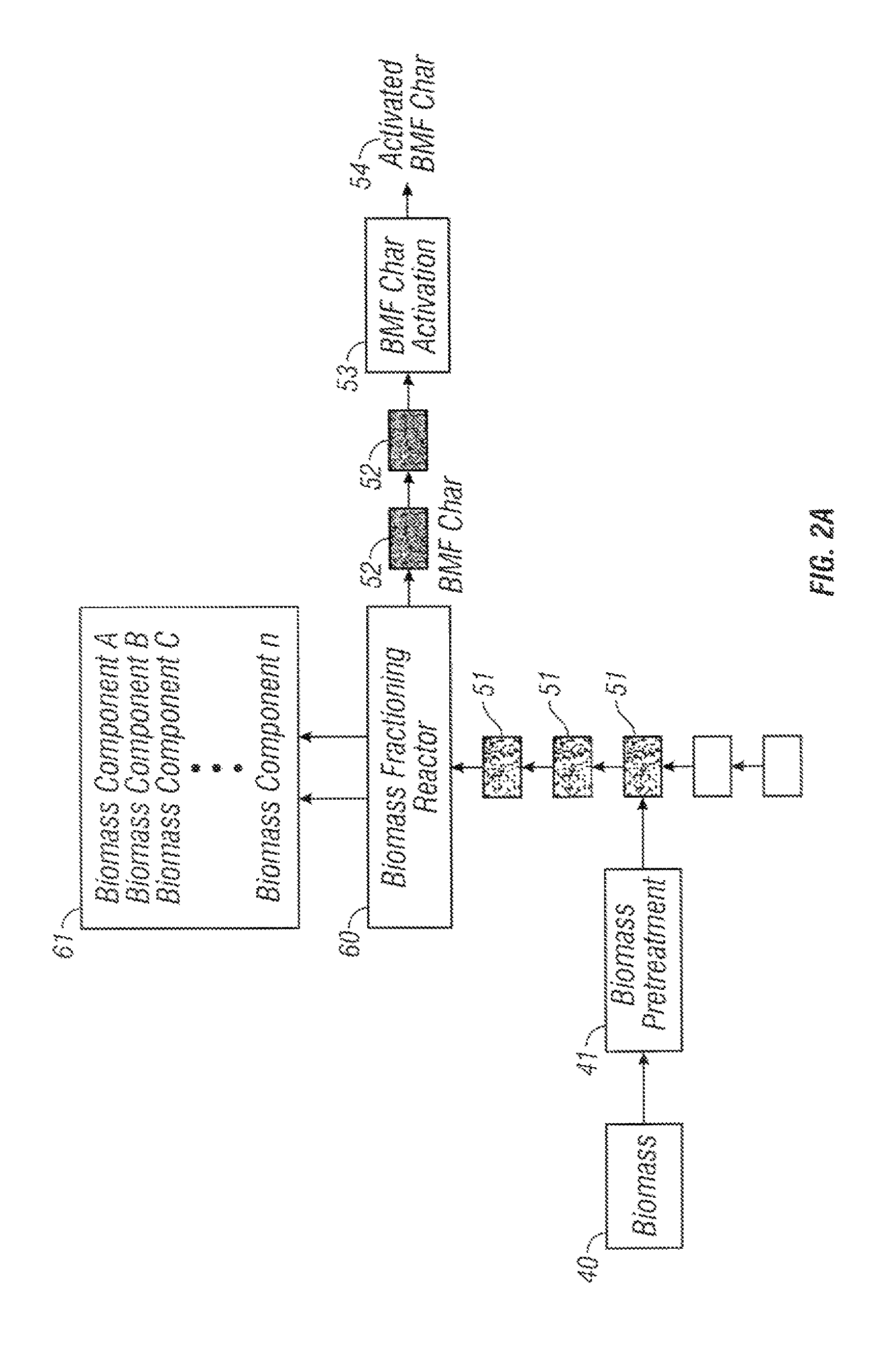Method for enhancing soil growth using bio-char
a biochar and soil technology, applied in the field of soil enhancement, can solve the problems of difficult to replicate this soil elsewhere, ineffective previous attempts to incorporate high biochar levels into soil, and limited use of biochar so far, and achieve the effect of being convenient to us
- Summary
- Abstract
- Description
- Claims
- Application Information
AI Technical Summary
Benefits of technology
Problems solved by technology
Method used
Image
Examples
example 1
Illustrative Example 1
Effect of Char Concentration
[0071]FIG. 6a shows plantings of Black Seed Simpson lettuce in soils containing different concentrations of steam activated corn char made hydrophilic via the above-described methods. The corn char had a BET surface area of 760 m2 / g (depicted in FIG. 5b). The data shown is 8 days after planting. Char pH was adjusted to 8.2 via seltzer water. From left to right, FIG. 6a shows data from lettuce grown in soils containing 100% sand, 10% char and 90% sand, 20% char and 80% sand, 30% char and 70% sand and 40% char and 60% sand (by volume). The char was washed with Dyna-Grow® nutrients prior to use. It is shown in this case that soils containing even 30% char allow lettuce growth; however, inhibition of soil growth is evident for the 40% and the 50% char soils
example 2
Illustrative Example 2
Effect of Nutrient Washing
[0072]FIGS. 6b and 6c demonstrate the effect of nutrient addition on the growth of Black Seed Simpson lettuce plants grown in soils containing different char concentrations. The char was derived from unactivated wood chip made hydrophilic via hydrocarbon expulsion and removal of adsorbed gases. The char exhibited a pH around 9 when wet. In particular, FIG. 6b shows nine plantings, all containing no external nutrient addition. The first row shows experiments with soil containing 10% char and 90% sand by volume, except for the potting in the middle which contains 100% sand. All the pottings on the left were subjected to a pH adjustment by nitric acid, adjusting the pH close to neutral. All the pottings on the right were subjected to a pH adjustment by buffered seltzer bringing the pH to around 8. The second row shows two pottings, both containing soil comprised of 20% char and 80% sand by volume. The third row shows pottings with 30% cha...
example 3
Illustrative Example 3
Introduction of Microorganisms into Biochar
[0073]In a two-gallon plastic container, 5 liters of distilled water are poured and aerated with an electric motor for 1 hour in the presence of a porous stone. 6 ml of molasses (Grandma's Molasses®, B&G Foods, Inc.) are then added along with 4 grams compost ingredient (Mycrogrow®, Fungi Perfecti Inc.) containing the following mixture of fungi and bacteria:
[0074]Endomycorrhizal fungi: Glomus intraradices, Glomus mosseae, Glomus aggregatum, Glomus clarum, Glomus deserticola, Glomus etunicatum, Gigaspora margarita, Gigaspora brasilianum, Gigaspora monosporum.
[0075]Ectomycorrhizal fungi: Rhizopogon villosullus, Rhizopogon luteolus, Rhizopogon amylopogon, Rhizopogon fulvigleba, Pisolithus tinctorius, Laccaria bicolor, Laccaria laccata, Scleroderma cepa, Scleroderma citrinum, Suillus granulatas, Suillus punctatapies.
[0076]Trichoderma fungi: Trichoderma harzianum, Trichoderma konigii
[0077]Bacteria: Bacillus subtillus, Bac...
PUM
| Property | Measurement | Unit |
|---|---|---|
| diameter | aaaaa | aaaaa |
| diameter | aaaaa | aaaaa |
| diameter | aaaaa | aaaaa |
Abstract
Description
Claims
Application Information
 Login to View More
Login to View More - R&D
- Intellectual Property
- Life Sciences
- Materials
- Tech Scout
- Unparalleled Data Quality
- Higher Quality Content
- 60% Fewer Hallucinations
Browse by: Latest US Patents, China's latest patents, Technical Efficacy Thesaurus, Application Domain, Technology Topic, Popular Technical Reports.
© 2025 PatSnap. All rights reserved.Legal|Privacy policy|Modern Slavery Act Transparency Statement|Sitemap|About US| Contact US: help@patsnap.com



